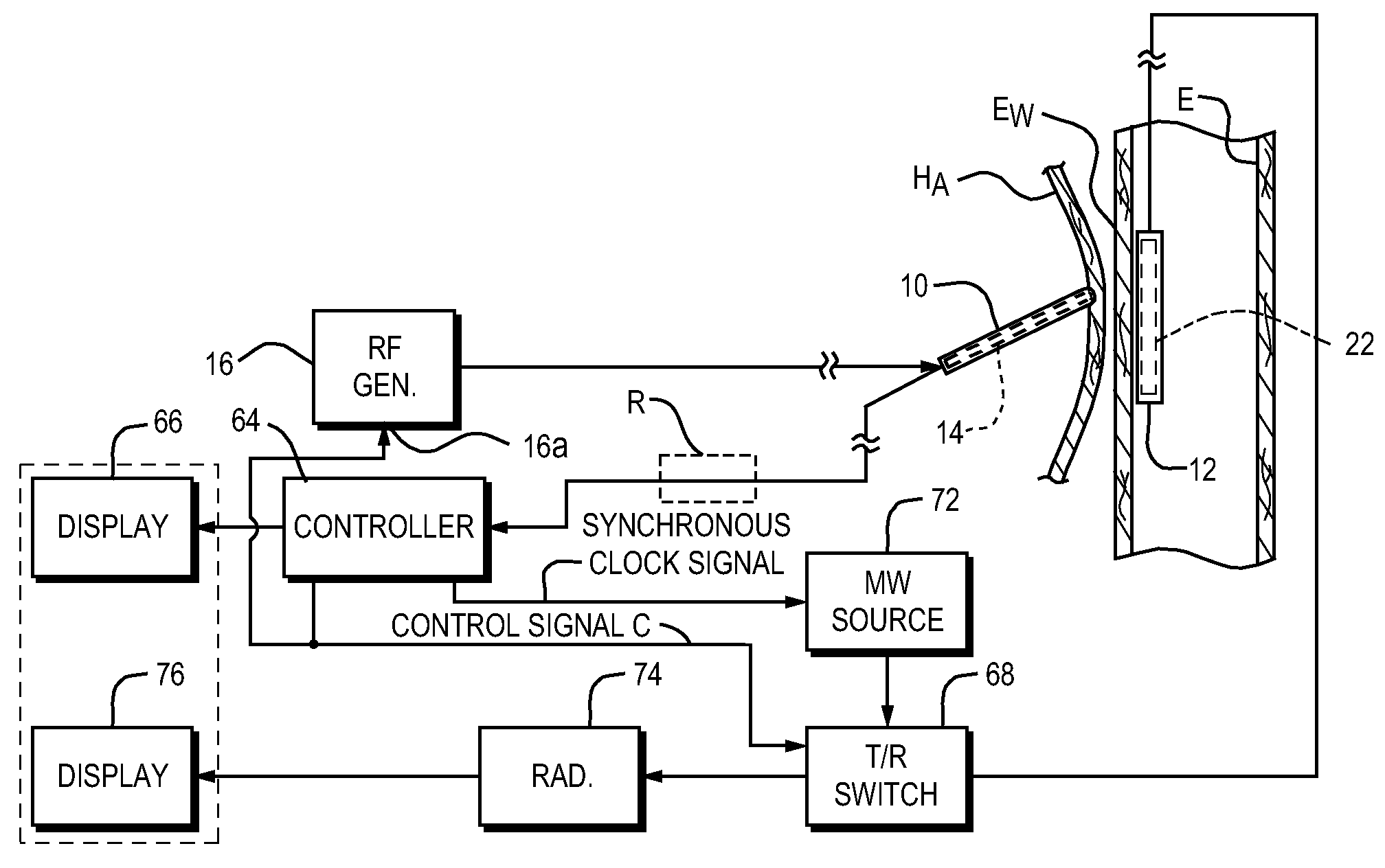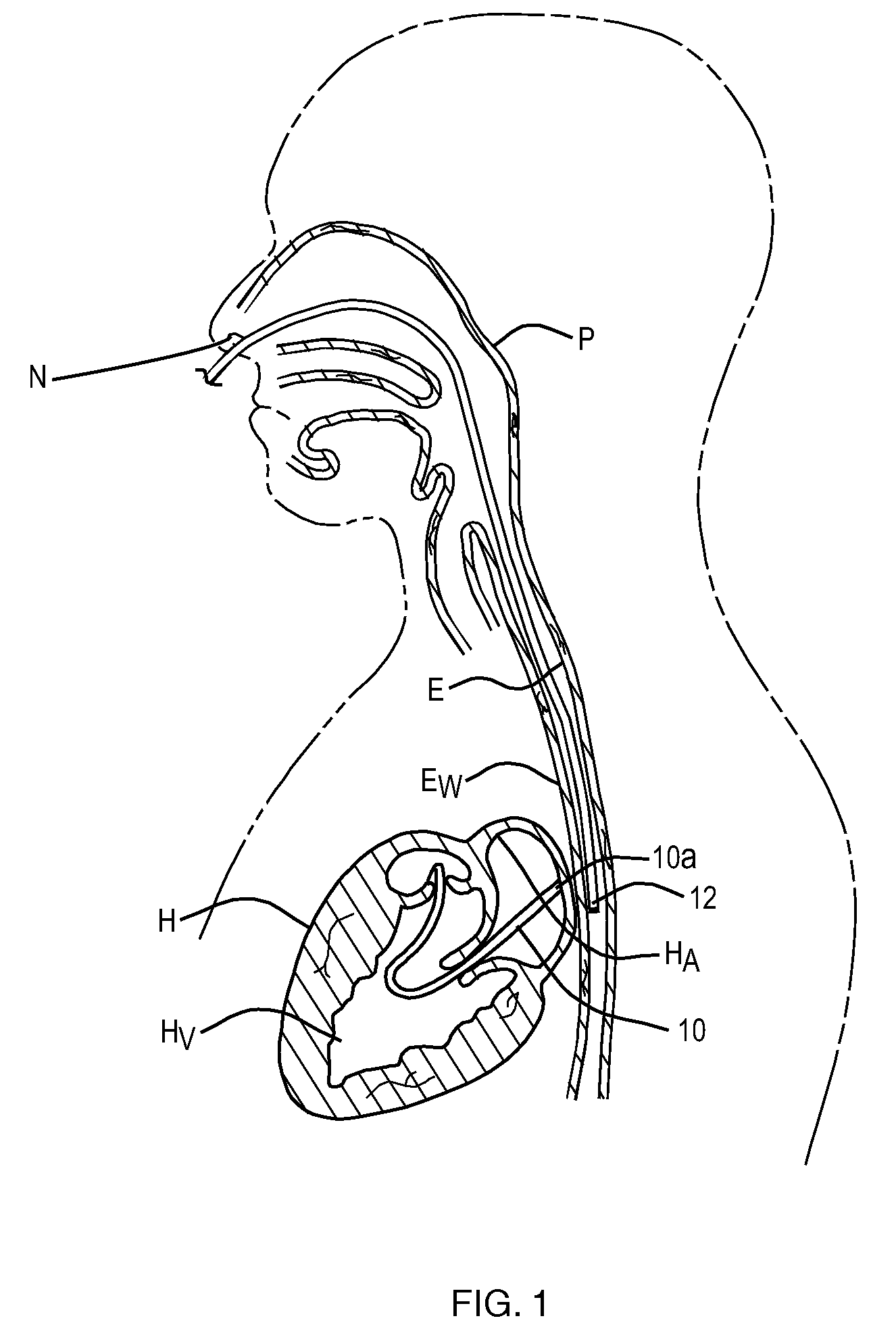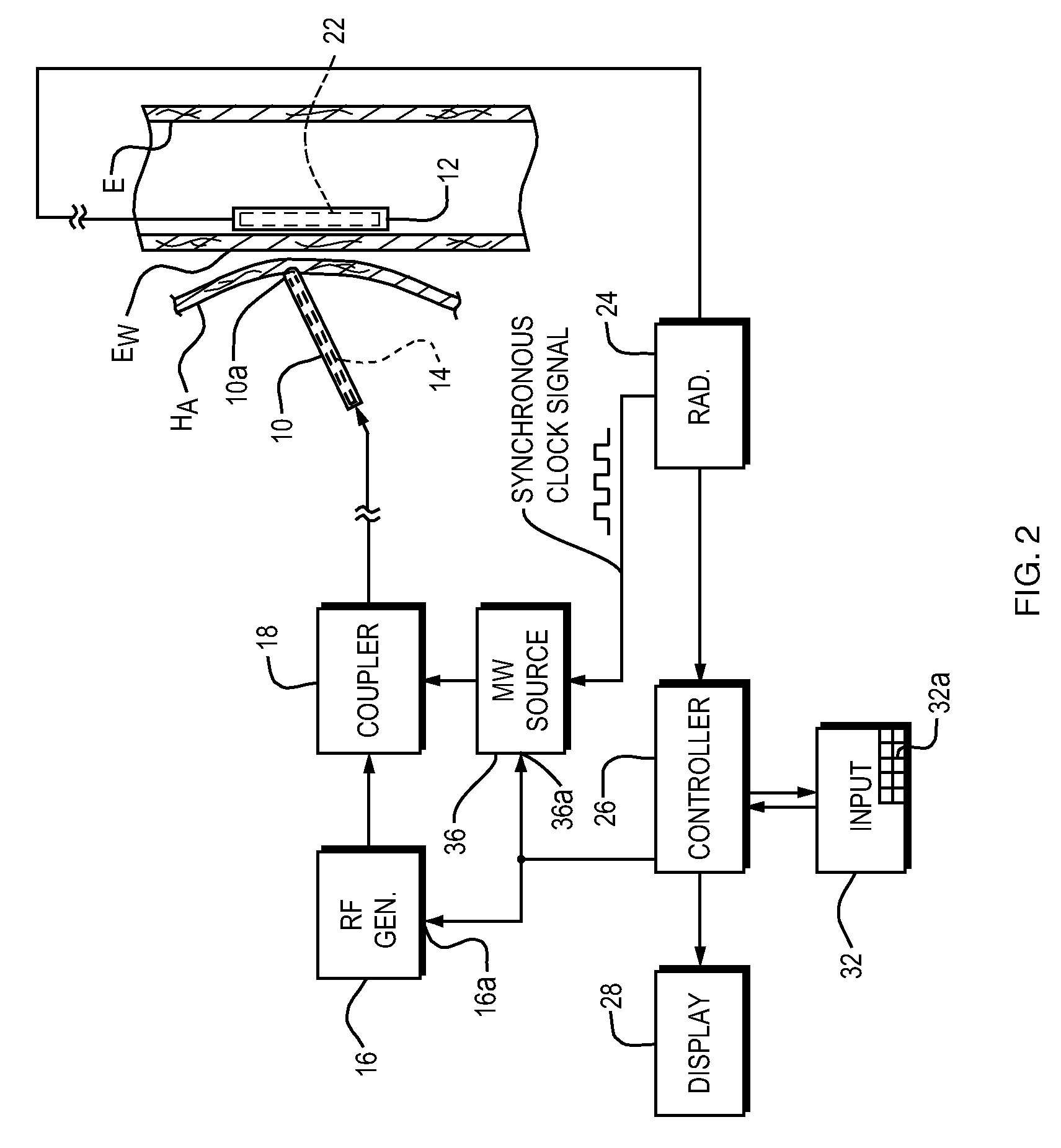Method and apparatus for aligning an ablation catheter and a temperature probe during an ablation procedure
a technology of temperature probe and ablation catheter, which is applied in the field of method and apparatus for aligning an ablation catheter and a temperature probe during an ablation procedure, can solve the problems of irreversible damage to the heart tissue, severe consequences, and uncontrollable ablation speed,
- Summary
- Abstract
- Description
- Claims
- Application Information
AI Technical Summary
Benefits of technology
Problems solved by technology
Method used
Image
Examples
Embodiment Construction
[0024]Refer first to FIG. 1 of the drawings which shows the head and torso of a patient having a heart H with a left ventricle HV and a left atrium HA. As is usually the case, the left atrium of the heart is very close to the anterior wall of the patient's esophagus E. During a conventional cardiac ablation procedure, an ablation catheter 10 is threaded into the left atrium HA via left ventricle HV so that the working end 10a of the catheter contacts the posterior wall of the left atrium as shown in FIG. 1.
[0025]In order to prevent overheating of the esophagus E during such an ablation procedure, a temperature probe 12 may be inserted into the patient's nasal passage N and threaded down into the esophagus E via the patient's pharynx P until the probe is positioned directly opposite the catheter end 10a at the ablation site as shown in FIG. 1. As the heart tissue is being ablated by catheter 10, the temperature probe 12 picks up thermal emissions from the esophageal wall EW and corre...
PUM
 Login to View More
Login to View More Abstract
Description
Claims
Application Information
 Login to View More
Login to View More - R&D
- Intellectual Property
- Life Sciences
- Materials
- Tech Scout
- Unparalleled Data Quality
- Higher Quality Content
- 60% Fewer Hallucinations
Browse by: Latest US Patents, China's latest patents, Technical Efficacy Thesaurus, Application Domain, Technology Topic, Popular Technical Reports.
© 2025 PatSnap. All rights reserved.Legal|Privacy policy|Modern Slavery Act Transparency Statement|Sitemap|About US| Contact US: help@patsnap.com



